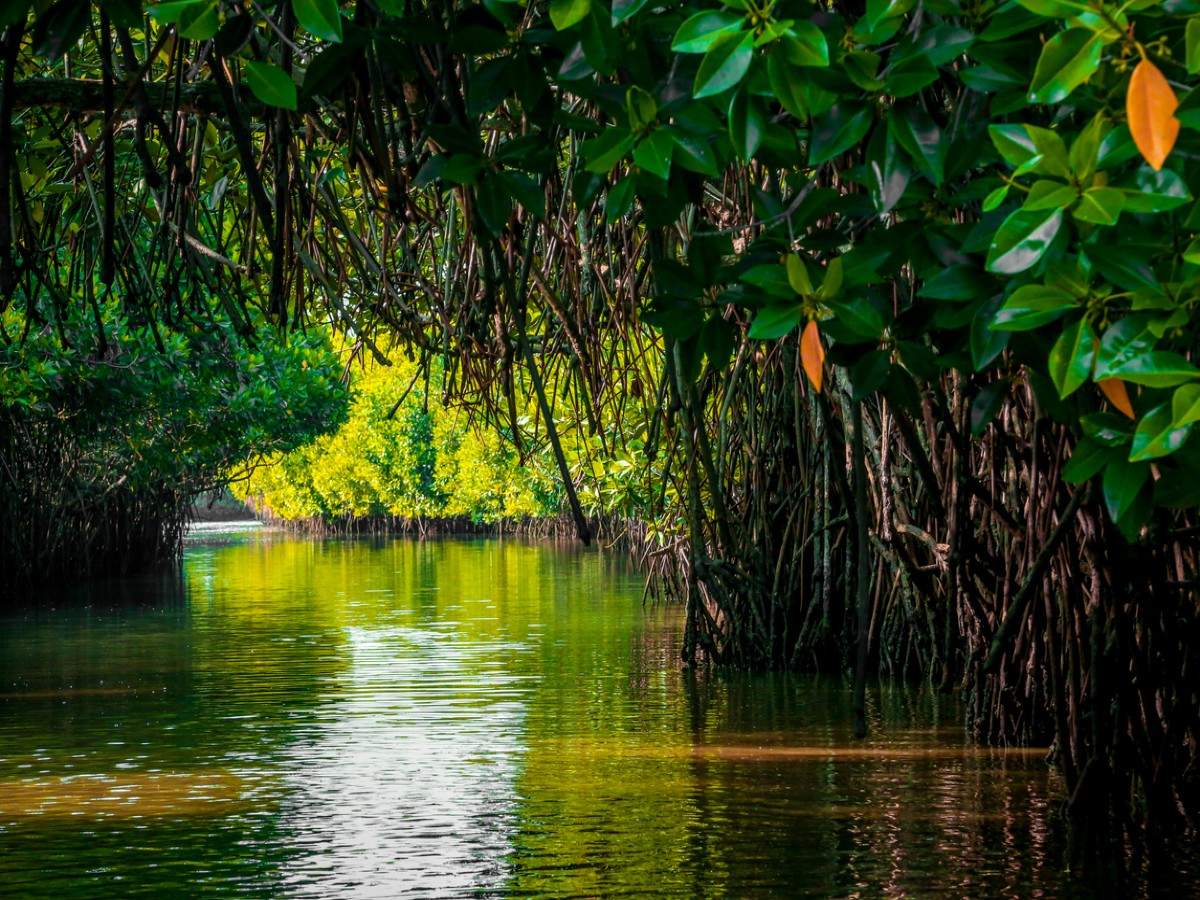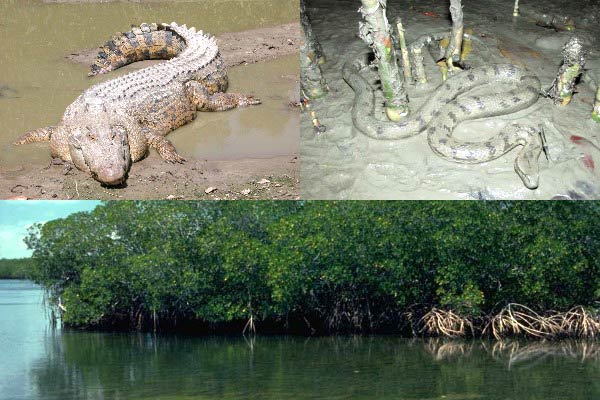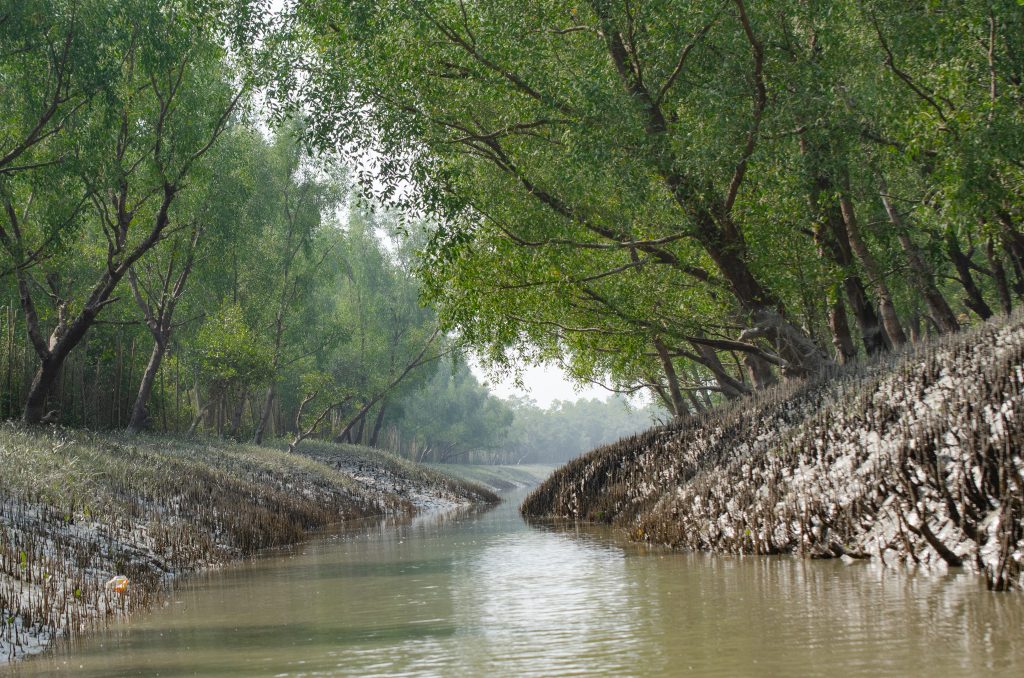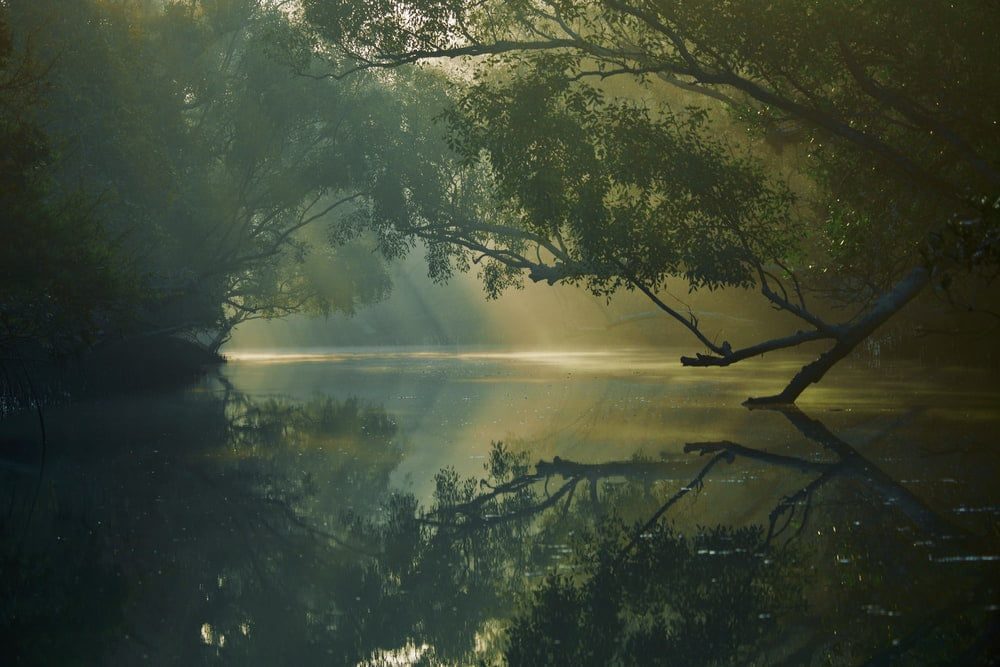Introduction
Largest mangrove forest: The Sundarbans, straddling the border of India and Bangladesh, is often touted as the world’s largest mangrove forest. This claim is not just a matter of pride for the region but also a significant point of interest for ecologists, conservationists, and travellers. With its intricate network of tidal waterways, vast expanses of mangrove forests, and rich biodiversity, the Sundarbans stands out as a natural wonder.

This blog explores whether the Sundarbans is indeed the world’s largest mangrove forest and delves into its ecological significance, the challenges it faces, and how Rayal Sundarban Tourism is promoting sustainable tourism in this unique landscape.
Defining the World’s Largest Mangrove Forest
To determine whether the Sundarbans is the world’s largest mangrove forest, it’s essential to understand the parameters used to define such a claim. Mangrove forests are coastal ecosystems found in tropical and subtropical regions, characterized by salt-tolerant trees and shrubs adapted to brackish waters and tidal conditions. These forests provide critical habitat for a diverse array of flora and fauna, offering numerous ecological benefits, including coastal protection, carbon sequestration, and support for fisheries.

Geographic Extent
The Sundarbans cover approximately 10,000 square kilometres (3,861 square miles), with around 6,000 square kilometres in Bangladesh and the remaining 4,000 square kilometres in India. This expansive area includes a vast network of rivers, creeks, and islands, forming a complex mosaic of aquatic and terrestrial habitats. The sheer size of the Sundarbans, combined with its dense mangrove cover, positions it as a strong contender for the title of the world’s largest mangrove forest.

Biodiversity and Ecosystem Services
The Sundarbans is renowned for its rich biodiversity, housing over 400 species of wildlife, including the iconic Bengal tiger, saltwater crocodiles, and the critically endangered masked finfoot and Ganges river dolphin. The forest also supports a wide variety of plant species, with around 84 different types of mangroves and mangrove associates. This biodiversity not only contributes to the ecological richness of the region but also underpins vital ecosystem services such as coastal protection, water purification, and carbon storage.
Comparative Analysis: Other Major Mangrove Forests
While the Sundarbans is often cited as the world’s largest mangrove forest, several other significant mangrove ecosystems exist worldwide. Comparing these regions helps to contextualize the claim.
The Amazon Delta Mangroves
The Amazon Delta in Brazil is home to extensive mangrove forests, covering an estimated area of around 7,000 square kilometres. These mangroves are part of the larger Amazon River basin, known for its immense biodiversity. However, the total area of the Amazon Delta’s mangroves is still smaller than that of the Sundarbans.

The Indus River Delta
The Indus River Delta in Pakistan also hosts a significant mangrove ecosystem, covering approximately 600,000 hectares (6,000 square kilometres). While these mangroves play a crucial role in coastal protection and support a variety of wildlife, their total area is less than that of the Sundarbans.
Southeast Asian Mangroves
Southeast Asia, particularly Indonesia, houses extensive mangrove forests. The Mangroves of Indonesia cover around 3.1 million hectares (31,000 square kilometres) across various islands. However, these mangroves are not a contiguous forest like the Sundarbans but rather a collection of separate mangrove stands spread across the archipelago.
Ecological Significance of the Sundarbans
The Sundarbans’ status as the world’s largest mangrove forest underscores its immense ecological significance. This unique ecosystem provides numerous benefits to both wildlife and human communities.

Coastal Protection
Mangroves act as natural buffers against coastal erosion, storm surges, and tsunamis. The dense root systems of mangrove trees stabilize the shoreline, reducing the impact of waves and protecting coastal communities from the devastating effects of natural disasters. The Sundarbans, with it’s vast mangrove cover, play a critical role in safeguarding the densely populated coastal areas of Bangladesh and India.
Carbon Sequestration
Mangrove forests are highly efficient at sequestering carbon, storing up to four times more carbon per unit area than terrestrial forests. The Sundarbans’ extensive mangrove cover makes it a significant carbon sink, helping mitigate climate change by absorbing large amounts of carbon dioxide from the atmosphere.
Biodiversity Hotspot
The Sundarbans is a biodiversity hotspot, supporting a wide array of plant and animal species. The region’s unique blend of terrestrial and aquatic habitats creates a rich tapestry of life, from the iconic Bengal tiger to the diverse array of bird species. The forest’s biodiversity is crucial for maintaining ecological balance and supporting the livelihoods of local communities that depend on fishing and other natural resources.

Challenges Facing the Sundarbans
Despite its ecological importance, the Sundarbans face numerous challenges that threaten its integrity and sustainability. More insights can be found under “Largest mangrove forest” in this blog. Also, you can Book the Sundarban Tour At Maity Tourism and Sundarban Leisure Tourism Powered By Argusdna,
Climate Change and Sea Level Rise
Climate change poses a significant threat to the Sundarbans. Rising sea levels, increased frequency and intensity of cyclones, and changing precipitation patterns all impact the delicate balance of this ecosystem. The intrusion of saltwater into freshwater areas affects both wildlife and agriculture, while the erosion of the delta’s islands threatens the habitat of many species. You can explore additional details about “Largest mangrove forest” in this blog.
Read More:
Deforestation and Habitat Loss
Human activities, including illegal logging, land conversion for agriculture, and infrastructure development, have led to deforestation and habitat loss in the Sundarbans. This not only reduces the forest cover but also disrupts the ecological functions of the mangroves, making the region more vulnerable to natural disasters.

Pollution and Overfishing
Pollution from industrial activities, agricultural runoff, and plastic waste pose a significant threat to the Sundarbans’ waterways and marine life. Overfishing and unsustainable fishing practices also deplete fish stocks, affecting the livelihoods of local communities and disrupting the food chain.
Royal Sundarban Tourism: Promoting Sustainable Tourism
In the face of these challenges, Rayal Sundarban Tourism is playing a vital role in promoting sustainable tourism and conservation efforts in the Sundarbans.
Eco-Tourism and Conservation
Royal Sundarban Tourism is committed to eco-tourism principles, ensuring that tourism activities have minimal impact on the environment and contribute positively to local communities. The organization works closely with local communities to create awareness about the importance of conservation and sustainable practices.
- Mangrove Restoration Projects: Rayal Sundarban Tourism collaborates with environmental organizations and local communities to implement mangrove restoration projects. These initiatives involve planting new mangroves, protecting existing ones, and educating visitors about the critical role of mangroves in coastal protection and biodiversity conservation.
- Wildlife Conservation Efforts: The organization supports wildlife conservation initiatives by funding research and monitoring programs. Tourists are encouraged to participate in wildlife monitoring activities, such as bird watching and tiger tracking, which generate valuable data for conservationists and raise awareness about the importance of protecting endangered species.
We have a genuine registered company Organization: Royal Sundarban Tourism
Organisations Web link: https://royalsundarbantourism.com/
Contact: +91 7439965413 / +91 8584838109
Gpay / Phone pay : 9804049535
Email: info@royalsundarbantourism.com
Address: Village: Tiger More, Gosaba, Pakhiralay, Pakhiralay Main road, District- 24 Parganas South, West Bengal 743370
Community Engagement and Empowerment
Royal Sundarban Tourism actively involves local communities in tourism activities, creating alternative livelihood opportunities and fostering a sense of ownership and responsibility towards the region’s conservation.

- Skill Development and Training: The organization offers training programs to equip residents with skills related to tourism and hospitality. This includes training in guiding, boat operation, handicraft production, and sustainable farming practices. By enhancing the skill sets of local communities, Rayal Sundarban Tourism creates employment opportunities and reduces dependence on traditional livelihoods that may be vulnerable to climate change impacts.
- Community-Based Tourism Initiatives: Encouraging community-based tourism initiatives ensures that the economic benefits of tourism are distributed equitably among residents. Homestays, cultural performances, and village tours provide visitors with an authentic and immersive experience while directly benefiting the host communities.
Climate Resilience and Disaster Preparedness
Building climate resilience and disaster preparedness is crucial for safeguarding the Sundarbans against future natural disasters. Royal Sundarban Tourism promotes resilience through various initiatives.
- Disaster Preparedness Programs: The organization works with local authorities and NGOs to conduct disaster preparedness programs for communities. These programs include training in emergency response, evacuation procedures, and first aid. By enhancing the capacity of residents to respond to disasters, Royal Sundarban Tourism contributes to saving lives and minimizing damage during future events.
- Sustainable Infrastructure Development: Rayal Sundarban Tourism advocates for and supports the construction of resilient housing, eco-friendly resorts, and green energy solutions. These initiatives enhance the region’s capacity to withstand extreme weather events and reduce the carbon footprint of tourism activities.

Conclusion
The Sundarbans, with its vast expanse of mangrove forests and rich biodiversity, is indeed the world’s largest mangrove forest. Its ecological significance, however, extends beyond its size. The Sundarbans play a critical role in coastal protection, carbon sequestration, and supporting a diverse array of wildlife. Yet, this unique ecosystem faces numerous challenges, from climate change and habitat loss to pollution and overfishing.
In this context, Rayal Sundarban Tourism stands out as a beacon of hope, promoting sustainable tourism and conservation efforts. By embracing eco-tourism principles, engaging local communities, and building climate resilience, Rayal Sundarban Tourism contributes to the long-term well-being of the Sundarbans. As visitors explore this enchanting region with Royal Sundarban Tourism, they become part of a collective effort to protect and preserve the world’s largest mangrove forest for future generations.
Through responsible tourism and community collaboration, the Sundarbans can continue to thrive as a sanctuary of nature’s marvels and a source of inspiration for all who venture into its mysterious and captivating embrace.

